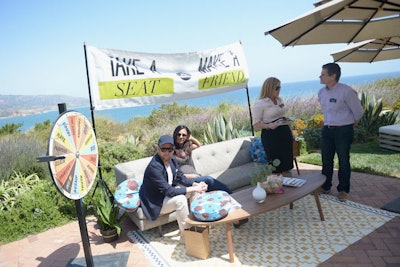
The PTTOW Summit, held in May at Southern California’s Terranea Resort, encouraged conference attendees to sit with one another and answer some of life's big questions. A spinning wheel positioned adjacent to a seating group offered a series of topics—like "hate," "doubt," and "purpose"—to break the ice and make the exercise more interesting. The coffee table positioned at the seating group offered a workbook that participants could open to find questions or activities to do together, and the event also offered "conversation cookies,” fortune cookies filled with more conversation topics. JOWY Productions was behind the event’s production.
Photo: Jason Kempin/Getty Images for PTTOW
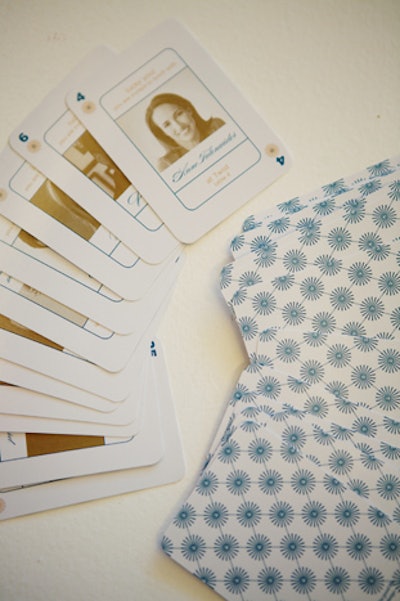
So-called “dine arounds” are hallmarks of the Engage luxury wedding industry summits, offering opportunities for small groups to interact and to give them some intimate time with event speakers. Each speaker plays host to a table of 10 randomly selected attendees, encouraging guests to mix and mingle outside their circle of friends. And to make the experience more fun, table assignments are given in playful ways. For instance, in Las Vegas attendees selected from among personalized playing cards that all bore speaker photos and restaurant names.
Photo: Scott Clark/Readyluck

Similarly, for Engage at Palm Beach's the Breakers, custom fabric flowers indicated each attendee's designated table number.
Photo: Chellise Michael Photography for Elan Artists
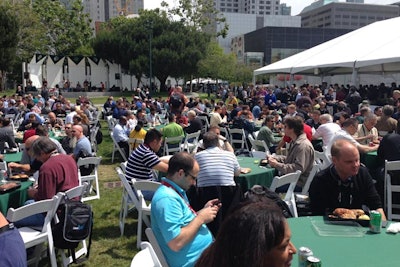
At Cisco Live, held in San Francisco in May, attendees ate lunch outside every day, with about 1,500 seats at large round tables—or on blankets available for those who wanted to find friends or experience a more casual setting. In another networking opportunity, Cisco Live attendees were also invited to join peers and Cisco experts in small groups over lunch for a chat about technical topics of the group's choice. The "Table Topics" discussions offered a fresh perspective on the issues that the masses were talking about at Cisco Live, for instance cloud security. Anyone was also welcome to start a discussion on a new topic and lead the agenda by finding an open table and posting the topic so other interested attendees could find it and join.
Photo: Mitra Sorrells/BizBash
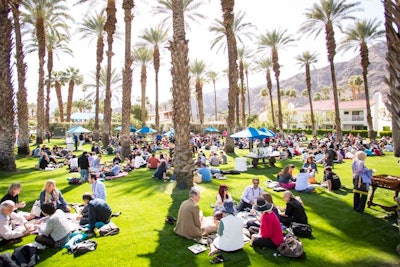
Similarly, for the TED Conference's simulcast event, TEDActive, held in the Southern California desert last year, about 700 guests gathered for a picnic lunch. The conversation-facilitating twist was that picnic baskets were available not for individuals, but for groups of seven—so each person had to meet six new attendees with whom to eat and talk.
Photo: Marla Aufmuth

Sometimes it takes a little break from formal networking talk to get the creative juices flowing—and the personal connections happening. To that end, TEDActive also set up informal game stations on hay bales around the venue as ice breakers for guests.
Photo: Alesandra Dubin/BizBash
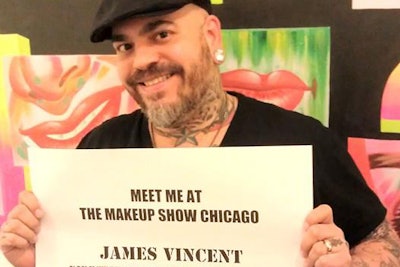
Some organizers get the networking going before the event doors even open to maximize the opportunities for interaction on site: Metropolitan Events & Production was behind a pre-event networking campaign for the 2012 shows that took place in both Chicago and Orlando. Organizers encouraged attendees to use social media to post selfies they took while holding signs that said "Meet Me at the Makeup Show,” along with their names and the event’s hashtags. The stunt was intended to build community and promote face recognition when the show kicked off. Organizers gathered the images and shared them on the event’s social channels to further build visibility among the participants.
Photo: Courtesy of the Makeup Show Chicago
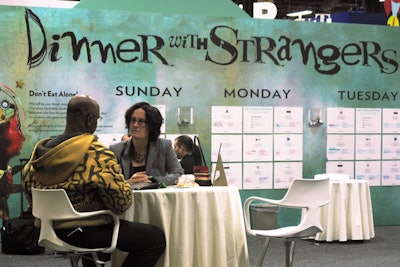
The Exhibitor Show's "Dinner With Strangers” program offered people attending the show solo a chance to maximize meal time for networking, instead of dining in their hotel rooms alone. Attendees could join group reservations arranged by organizers at multiple restaurants for each night of the show. Sign-up sheets in the conference registration area detailed the eatery's name, type of cuisine, approximate cost, and reservation time.
Photo: Courtesy of Exhibitor Show
BuzzFeed Presents an Excuse for Hollywood to Drink Together
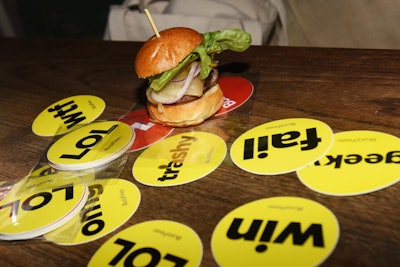
BuzzFeed's new entry onto the Golden Globes party circuit this year was a 200-guest affair at the Eveleigh on Thursday. The event included a Hollywood-theme GIF booth, tarot card predictions for the new year, and stickers that resembled the site's iconic badges such as OMG, Wtf, Win, and LOL.
Photo: Macey J. Foronda/BuzzFeed
BuzzFeed Presents an Excuse for Hollywood to Drink Together

Guests scooped up gift bags dubbed "award season survival totes" at BuzzFeed's party. The packs contained party-hopping essentials such as snacks, water bottles, mints, and flasks.
Photo: Macey J. Foronda/BuzzFeed
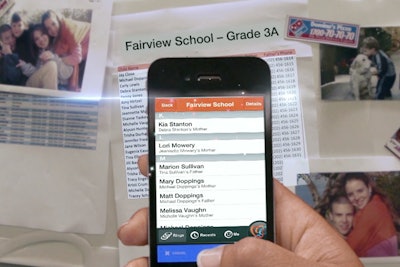
The Ringya app allows planners to manage and share attendee information.
Photo: Courtesy of Ringya
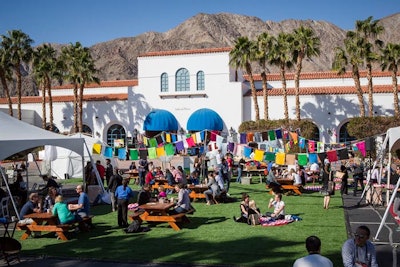
At TEDActive in the Palm Springs area in 2013, organizers offered picnic baskets for groups of seven. The idea was to encourage each person to meet six others with whom to eat and connect.
Photo: Marla Aufmuth
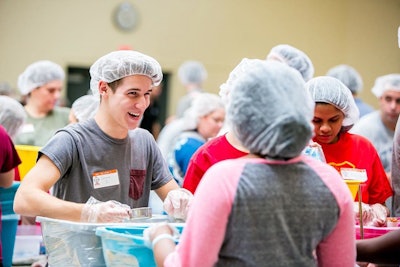
Feeding Children Everywhere assembles groups to package healthy meals for children in need.
Photo: Courtesy of Feeding Children Everywhere
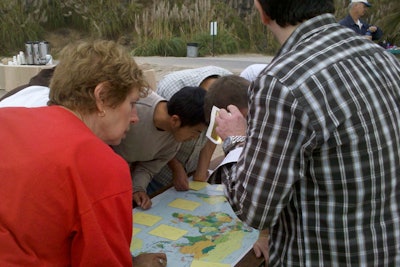
In Corporate Games Team Building's Amazing Journey activity, teams must decipher clues using their smartphones and complete physical and mental challenges provided by facilitators stationed in various locations. Each completed task helps team members figure out the 10 cities in the world that comprise their “race route,” and the first team to complete the route wins. The event can take place anywhere, inside a hotel or conference center or around a few city blocks, and the clues can be customized to align with an event’s theme or goals.
Photo: Courtesy of Corporate Games Team Building
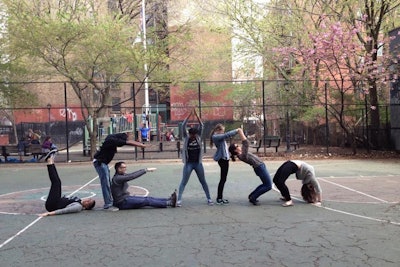
In the Spy Game, from the Go Game, participants work in teams to complete a series of activities and solve clues provided via smartphone, all based on the premise that someone from their company has been kidnapped and they need to solve the crime. Missions may include having to spell a word without writing, creating videos, and engaging with actors they may encounter throughout the designated course. Each game takes about two hours and combines some high-tech activities with more campy elements such as disguises and cracking codes.
Photo: Courtesy of the Go Game

Smartphone cameras drive the fun in Corporate Games Team Building's Paparazzi game. Organizers divide participants into groups of about eight people each and give them a list of photographs and a bag of costumes and props. Teams then have a set amount of time to travel around a venue or within a designated part of the city, to capture as many of the photos as possible. Examples include a photo of team members posing as celebrities dining alfresco or a photo of team members hosting a cooking show. Organizers score the photos as they come in and put them into a slide show which can be viewed by everyone at the end of the event.
Photo: Courtesy of Corporate Games Team Building



















